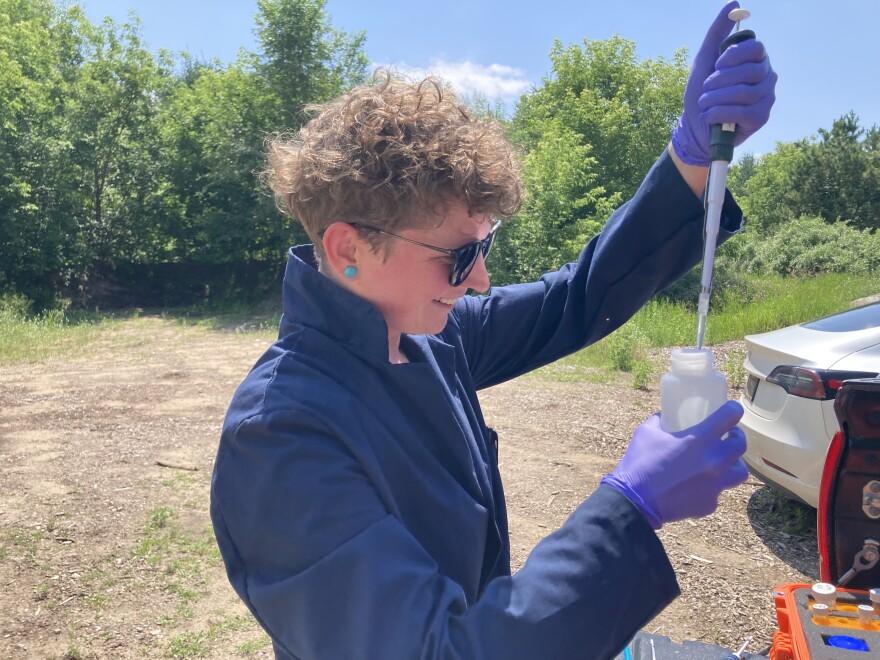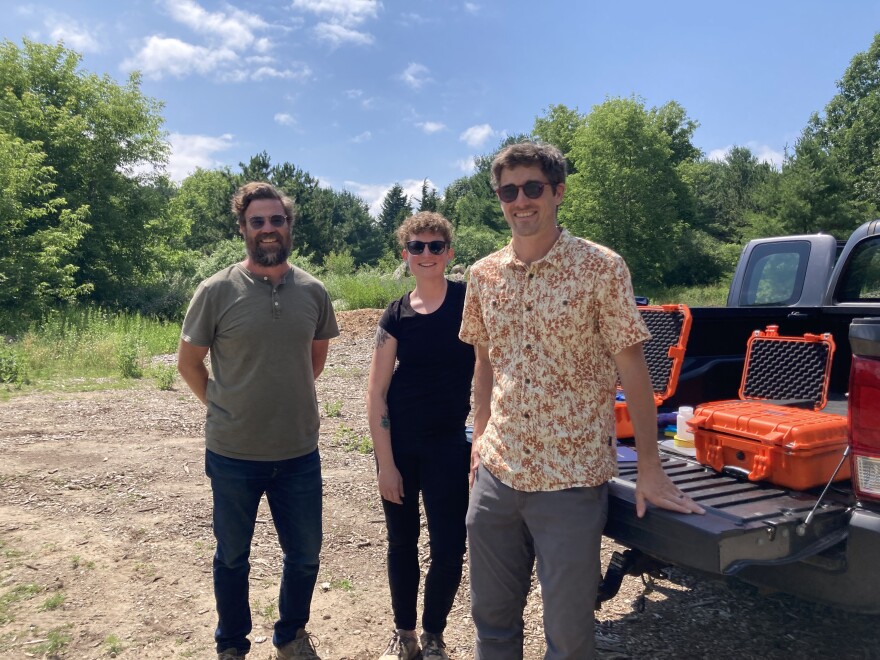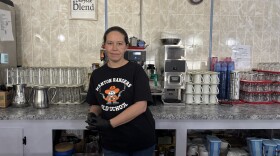Stephanie Baklarz is wearing a lab coat and nitrile gloves shaking test tubes in the back of a pickup truck.
She works for Wave Lumina, a tech startup in Traverse City that’s working on a quicker way to test water for PFAS — a group of forever chemicals linked to numerous health issues that don’t break down easily in the environment.
The team is troubleshooting the technology in the field for the first time today.
John Woodruff is also on the Wave Lumina team. He says most companies generally have an idea of which sites might have PFAS contamination. But finding precisely where that contamination is, is harder.
"One of the primary sources is firefighting foam," Woodruff said. "But the best tool they have right now to determine where [contamination is] within the footprint of the site, is interviews with former employees."
Right now, engineers basically have to play Battleship: take what info they get from interviews with former employees, sample those areas, then wait weeks, sometimes months, for a result to come back.

Vernon LaLone founded Wave Lumina to solve that problem.
"Some of these, these site investigations, stretch on for two to three years, like some of them are really long, and that's just to kind of delineate the boundaries of the contamination. But if they can do that in a couple weeks, then we can speed up clean up," LaLone said.
Once Wave Lumina is more refined, it will spit out results in only 20 minutes, allowing engineers to make decisions right then and there.
The team has been developing that technology in a lab at Northwestern Michigan College for over a year.
Right now, it consists of two briefcase-sized boxes: One runs a series of proprietary chemical tests on a water sample. The other runs that sample through a software the team has developed and detects which kinds of PFAS are present.
Today, they’ll test water samples using the Wave Lumina technology, then send those samples to a lab to compare results.
But the ultimate goal is to sell this service, and eventually the test kits themselves, to customers like environmental engineers and companies working on PFAS-destruction technology.
The new funding they secured this month, through the National Science Foundation and The Activate Fellowship, gives them about a two year runway to make their technology viable. LaLone thinks that’s doable.
"I hope that we've got these products out there in the hands of people, actually solving their problems," he said.
Helping speed up how we find PFAS contamination and clean it up.







